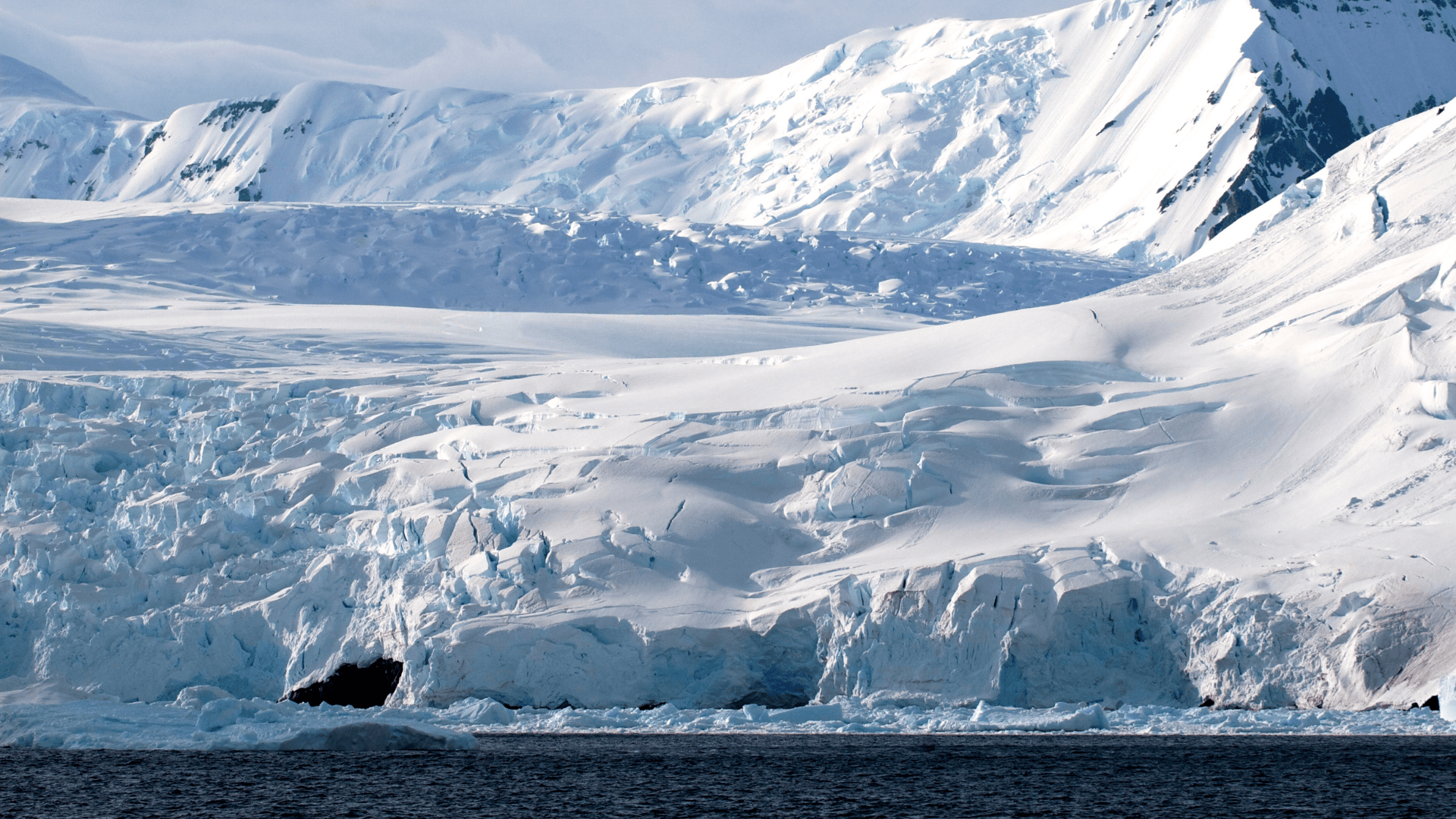Climate Determines Mammal Distribution, Reveals Study by North Carolina State University
Climate Determines Mammal Distribution, Reveals Study by North Carolina State University
Climate Determines Mammal Distribution, Reveals Study by North Carolina State University
Sep 4, 2024
Sep 4, 2024
Sep 4, 2024

Illustrative image. Credit: Getty Images via Canva.
Illustrative image. Credit: Getty Images via Canva.
Illustrative image. Credit: Getty Images via Canva.
A study using over 6,000 camera traps in the U.S. reveals that climate is the main factor in mammals' habitat choices, surpassing human influence. The research highlights the future impact of climate change on species.
A study using over 6,000 camera traps in the U.S. reveals that climate is the main factor in mammals' habitat choices, surpassing human influence. The research highlights the future impact of climate change on species.
A study using over 6,000 camera traps in the U.S. reveals that climate is the main factor in mammals' habitat choices, surpassing human influence. The research highlights the future impact of climate change on species.
A study from North Carolina State University has revealed that climate, especially factors like temperature and precipitation, is the primary determinant of where mammals choose to live. Using data from over 6,000 camera traps across the United States, researchers found that climatic conditions have a far greater effect on mammal distribution than human activity. These findings are crucial for predicting how climate change could affect the habitats of various species in the future.
Climate as the Decisive Factor
The research, which analyzed data from 6,645 camera traps and covered 25 mammal species, identified climate as the most influential factor in determining mammal populations' distribution. Elements like average temperature and precipitation levels were the main drivers of mammals' habitat choices, outweighing other variables such as proximity to urban areas or agricultural activities.
"While human presence affects some species, especially in highly urbanized regions, climate stood out as the main factor in mammal distribution," said Roland Kays, the research's lead author.
Impact of Human Activities
Although climate was the dominant factor, the study highlighted that human activity still has notable effects in some cases. Species living near cities or in areas heavily altered by agriculture are the most affected by human presence, either avoiding or adapting to these environments.
However, the effects of human activities were classified as secondary compared to climate variables, suggesting that climate change will have a more profound impact on mammal habitats than urban or agricultural expansion.
Creation of New Ecoregions
One innovative aspect of the research was the definition of new ecoregions based on mammals aligned with plant growth patterns. These ecoregions were established by correlating mammals' habitat preferences with the climatic and vegetative conditions of the areas studied. The connection between mammals and local vegetation reinforces that mammal habitats will also be affected as climate alters plant growth.
Implications for Climate Change
The research warns about the drastic changes that global warming may bring to mammal habitats. With rising temperatures and changing precipitation patterns, many mammal species may need to migrate to new areas or face the risk of extinction.
Understanding how climate influences species distribution is paramount to predicting future changes and developing conservation strategies. "Knowing how climate impacts mammals will help us predict where they will live in a hotter, more uncertain future," Kays explained.
—
North Carolina State University's research sheds new light on the decisive role of climate in mammal distribution, with significant implications for the future of biodiversity. As the planet continues to warm, the impact on mammal habitats will be inevitable, and these findings are a critical step toward anticipating and mitigating these changes.
—
Want to learn more about how climate influences mammal life? Check out the full article that inspired this piece and explore the details of the research from North Carolina State University.
A study from North Carolina State University has revealed that climate, especially factors like temperature and precipitation, is the primary determinant of where mammals choose to live. Using data from over 6,000 camera traps across the United States, researchers found that climatic conditions have a far greater effect on mammal distribution than human activity. These findings are crucial for predicting how climate change could affect the habitats of various species in the future.
Climate as the Decisive Factor
The research, which analyzed data from 6,645 camera traps and covered 25 mammal species, identified climate as the most influential factor in determining mammal populations' distribution. Elements like average temperature and precipitation levels were the main drivers of mammals' habitat choices, outweighing other variables such as proximity to urban areas or agricultural activities.
"While human presence affects some species, especially in highly urbanized regions, climate stood out as the main factor in mammal distribution," said Roland Kays, the research's lead author.
Impact of Human Activities
Although climate was the dominant factor, the study highlighted that human activity still has notable effects in some cases. Species living near cities or in areas heavily altered by agriculture are the most affected by human presence, either avoiding or adapting to these environments.
However, the effects of human activities were classified as secondary compared to climate variables, suggesting that climate change will have a more profound impact on mammal habitats than urban or agricultural expansion.
Creation of New Ecoregions
One innovative aspect of the research was the definition of new ecoregions based on mammals aligned with plant growth patterns. These ecoregions were established by correlating mammals' habitat preferences with the climatic and vegetative conditions of the areas studied. The connection between mammals and local vegetation reinforces that mammal habitats will also be affected as climate alters plant growth.
Implications for Climate Change
The research warns about the drastic changes that global warming may bring to mammal habitats. With rising temperatures and changing precipitation patterns, many mammal species may need to migrate to new areas or face the risk of extinction.
Understanding how climate influences species distribution is paramount to predicting future changes and developing conservation strategies. "Knowing how climate impacts mammals will help us predict where they will live in a hotter, more uncertain future," Kays explained.
—
North Carolina State University's research sheds new light on the decisive role of climate in mammal distribution, with significant implications for the future of biodiversity. As the planet continues to warm, the impact on mammal habitats will be inevitable, and these findings are a critical step toward anticipating and mitigating these changes.
—
Want to learn more about how climate influences mammal life? Check out the full article that inspired this piece and explore the details of the research from North Carolina State University.
A study from North Carolina State University has revealed that climate, especially factors like temperature and precipitation, is the primary determinant of where mammals choose to live. Using data from over 6,000 camera traps across the United States, researchers found that climatic conditions have a far greater effect on mammal distribution than human activity. These findings are crucial for predicting how climate change could affect the habitats of various species in the future.
Climate as the Decisive Factor
The research, which analyzed data from 6,645 camera traps and covered 25 mammal species, identified climate as the most influential factor in determining mammal populations' distribution. Elements like average temperature and precipitation levels were the main drivers of mammals' habitat choices, outweighing other variables such as proximity to urban areas or agricultural activities.
"While human presence affects some species, especially in highly urbanized regions, climate stood out as the main factor in mammal distribution," said Roland Kays, the research's lead author.
Impact of Human Activities
Although climate was the dominant factor, the study highlighted that human activity still has notable effects in some cases. Species living near cities or in areas heavily altered by agriculture are the most affected by human presence, either avoiding or adapting to these environments.
However, the effects of human activities were classified as secondary compared to climate variables, suggesting that climate change will have a more profound impact on mammal habitats than urban or agricultural expansion.
Creation of New Ecoregions
One innovative aspect of the research was the definition of new ecoregions based on mammals aligned with plant growth patterns. These ecoregions were established by correlating mammals' habitat preferences with the climatic and vegetative conditions of the areas studied. The connection between mammals and local vegetation reinforces that mammal habitats will also be affected as climate alters plant growth.
Implications for Climate Change
The research warns about the drastic changes that global warming may bring to mammal habitats. With rising temperatures and changing precipitation patterns, many mammal species may need to migrate to new areas or face the risk of extinction.
Understanding how climate influences species distribution is paramount to predicting future changes and developing conservation strategies. "Knowing how climate impacts mammals will help us predict where they will live in a hotter, more uncertain future," Kays explained.
—
North Carolina State University's research sheds new light on the decisive role of climate in mammal distribution, with significant implications for the future of biodiversity. As the planet continues to warm, the impact on mammal habitats will be inevitable, and these findings are a critical step toward anticipating and mitigating these changes.
—
Want to learn more about how climate influences mammal life? Check out the full article that inspired this piece and explore the details of the research from North Carolina State University.
Compartir en:
Compartir en:
Ver También
Ver También

DeepSeek AI: el chatbot chino que está sacudiendo el mercado global
Feb 7, 2025

Estudio revela que la vida social activa puede reducir el riesgo de demencia
Feb 4, 2025

Año nuevo lunar 2025: la llegada del año de la serpiente
Jan 30, 2025

Nueva hipótesis sobre el origen de los dinosaurios desafía conceptos tradicionales
Jan 27, 2025

Colapso de la plataforma de hielo Conger: alerta para la Antártida Oriental
Dec 20, 2024

Emociones y el cuerpo humano: conexiones milenarias en textos neoasirios
Dec 20, 2024

Un estudio relaciona la contaminación atmosférica con el riesgo de tromboembolia venosa
Dec 20, 2024

Ambiente potencialmente habitable en Marte descubierto por Perseverance
Dec 20, 2024

Revolución XRISM: Nuevos descubrimientos sobre agujeros negros supermasivos
Oct 15, 2024

Estudio aponta que la duplicación del gen AMY1, relacionado con la digestión del almidón, precede a la agricultura
Oct 14, 2024

Nacimientos en la UE caen por debajo de los 4 millones por primera vez desde 1960
Oct 11, 2024

Excavación en Dinamarca revela 50 esqueletos Viking increíblemente preservados
Oct 10, 2024

Estudio detecta mayor incidencia de asma y rinitis alérgica en personas nacidas en otoño e invierno en Finlandia
Oct 9, 2024

Estudio señala similitudes entre la pubertad de adolescentes de la Edad de Hielo y jóvenes modernos
Oct 8, 2024

Análisis de ADN en momias chinas de 3.600 años revela el queso más antiguo del mundo
Oct 7, 2024

Estudio revela estabilidad genética de poblaciones del África Austral durante 10 milenios
Oct 4, 2024

Nueve lugares míticos que podrían haber existido, según descubrimientos arqueológicos
Oct 3, 2024

Cómo los derechos humanos pueden salvar los arrecifes de coral y responsabilizar a los gobiernos
Oct 2, 2024

Informe de Carbon Brief señala que 2024 podría ser el año más cálido de la historia
Sep 4, 2024

El clima determina la distribución de mamíferos, revela estudio de la Universidad Estatal de Carolina del Norte
Sep 4, 2024

DeepSeek AI: el chatbot chino que está sacudiendo el mercado global
Feb 7, 2025

Estudio revela que la vida social activa puede reducir el riesgo de demencia
Feb 4, 2025

Año nuevo lunar 2025: la llegada del año de la serpiente
Jan 30, 2025

Nueva hipótesis sobre el origen de los dinosaurios desafía conceptos tradicionales
Jan 27, 2025

Colapso de la plataforma de hielo Conger: alerta para la Antártida Oriental
Dec 20, 2024

Emociones y el cuerpo humano: conexiones milenarias en textos neoasirios
Dec 20, 2024

Un estudio relaciona la contaminación atmosférica con el riesgo de tromboembolia venosa
Dec 20, 2024

Ambiente potencialmente habitable en Marte descubierto por Perseverance
Dec 20, 2024

Revolución XRISM: Nuevos descubrimientos sobre agujeros negros supermasivos
Oct 15, 2024

Estudio aponta que la duplicación del gen AMY1, relacionado con la digestión del almidón, precede a la agricultura
Oct 14, 2024

Nacimientos en la UE caen por debajo de los 4 millones por primera vez desde 1960
Oct 11, 2024

Excavación en Dinamarca revela 50 esqueletos Viking increíblemente preservados
Oct 10, 2024

Estudio detecta mayor incidencia de asma y rinitis alérgica en personas nacidas en otoño e invierno en Finlandia
Oct 9, 2024

Estudio señala similitudes entre la pubertad de adolescentes de la Edad de Hielo y jóvenes modernos
Oct 8, 2024

Análisis de ADN en momias chinas de 3.600 años revela el queso más antiguo del mundo
Oct 7, 2024

Estudio revela estabilidad genética de poblaciones del África Austral durante 10 milenios
Oct 4, 2024

Nueve lugares míticos que podrían haber existido, según descubrimientos arqueológicos
Oct 3, 2024

Cómo los derechos humanos pueden salvar los arrecifes de coral y responsabilizar a los gobiernos
Oct 2, 2024

Informe de Carbon Brief señala que 2024 podría ser el año más cálido de la historia
Sep 4, 2024

El clima determina la distribución de mamíferos, revela estudio de la Universidad Estatal de Carolina del Norte
Sep 4, 2024